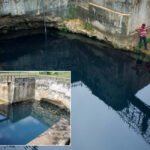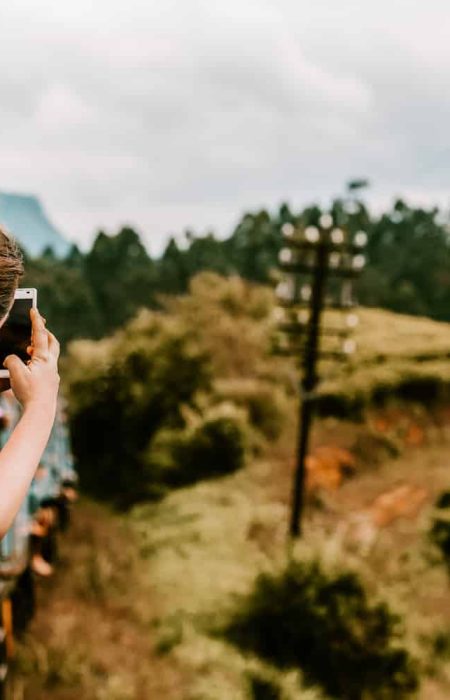An island of lush landscapes, rich history and diverse culture, Sri Lanka frequently rewards in its travelers with a wealth of hidden gems away from the beaten path. Ampara is such a treasure as it has many hidden tourist attractions and the area yet to be explored. Kotaveheragala, one of these, is an ancient site which attracts the lovers of the history as well as the adventurers. Away from the normal circuits for tourists, Kotaveheragala provides that experience of Sri Lanka’s deep seeded past in its purest form, while allowing the appreciation of the tranquility of nature. Find out Why Ampara and Kotaveheragala should be in your travel itinerary through this article which discusses what you can see and do and how.
A Brief Overview of Ampara
Sri Lanka’s Ampara is a district of the eastern province around 360 kilometers from Colombo. The region also is famous for rice cultivation. Most of Ampara is rural, but Ampara is a beautiful scenic spot with unique natural resources and culturally significant places that are certainly worth visiting.
An exposition of the Culture and History of Ampara.
The history of Ampara is co´eneshed with the ancient civilizations of Sri Lanka. The area was once the Ruhunu Kingdom, and the Archaeological sites that show us traces of Sri Lanka’s past are many and abundant. Besides, Ampara has been affected by many religious communities like Buddhism, Hinduism and Islam to which its religious monuments and practices testify. To begin with, Ampara is remarkable for the peace and cooperation between these different communities; it is as diverse and as rich as they are.
The national parks, lakes and wildlife reserves are also dotted in the district. Ampara has something to offer for travelers who want to get a taste of it all nature and history.
Discovering Kotaveheragala: The Ancient Treasure
Kotaveheragala is one of the lesser known sites in Ampara, but holds great deal of historical significance. Kotaveheragala is often in the shadow of more famous archaeological sites of Sri Lanka but it offers important experience for those interested in history and those who search for spiritual solace.
The History of Kotaveheragala
The Buddhist monastery complex of Kotaveheragala is very ancient. The construction presumably took place during the early Anuradhapura period and so it would be well over 1,500 years old. It most probably was constructed by kings and patrons who wished to propagate Buddhism across the island and its architectural styles were as the times demanded.
Kota, which means the peak or the top and Vehera means the temple or stupa, gives an idea that Kotaveheragala was on a raised position, a common characteristic of most ancient Buddhist temples. Of religious and cultural life of ancient Sri Lanka the site contains stupas, rock inscriptions and other various ruins.
Kotaveheragala is also particularly interesting because the modern restoration efforts, if any, are comparatively few. This means the site itself might not be as grand as, say, Anuradhapura or Polonnaruwa, but the untouched and authentic atmosphere is a treat for those that go searching. Kotaveheragala is special for many because of its raw and authentic feel.
Architectural Features of Kotaveheragala
The way in which the architectural features of Kotaveheragala resemble other early Buddhist sites found in Sri Lanka. The main stupa, although quite damaged, still stands, symbolising the importance of the site as a place of spirituality. Kotaveheragala is but a typical stupa of ancient Sri Lanka that was constructed to enshrine sacred relics, such as those of the Buddha or may be of important monks.
Visitors will find remnants of other monastic buildings around the stupa, including the bodhi tree platform, which was probably a building dedicated to meditation and worship. Inscriptions in stone provide clues as to who the monks were who once lived here, as well as who paid for the building of this site.
The rock-cut caves at Kotaveheragala were probably used as dwelling places for the monks and are one feature which is of great interest. Now weathered by time these caves remain, with their basic structure, providing some insight into the ascetic lives of the monks that lived within. However, the history of the site is also provided further by rock inscriptions, and there are gaps to be filled in, which has been accomplished by scholars who are still studying the place.
The Things to Do in Kotaveheragala –Explore the Ruins
Visitors travelling to Kotaveheragala come primarily for exploring the ancient ruins. While walking through the site, slowly appreciate the stupa, rock caves, and inscriptions as a result of the craftsmanship poured into making them. If you are a history junky, a local guide could explain the historical context of the site as well as the meaning of numerous features.
Meditation and Reflection
Being a serene and secluded area Kotaveheragala is the best place for meditation or quiet reflection. With its location set apart from the hustle bustle of the modern life, it is the site you’d love during your search of quest for a spiritual solace. Visitors often find that sitting near the stupa or underneath one of the ancient trees can offer a rare chance to experience some connection to times past — and some time alone.
Photography
Kotaveheragala will be a photographer’s delight with many attractions to capture images. Things become more dramatic and compelling because of the combination of ancient ruins, natural landscapes, and ever changing light conditions. It also means that because the site is so remote there are fewer tourists meaning you can take uninterrupted photos of the picture sites.
Nature Walks
Kotaveheragala is mainly a historical site but the surrounding nature makes the site a perfect place to walk around on nature. There are lots of plant and animal species in the surrounding area and, while walking around, you’re likely to see birds and butterflies and so on. This hidden gem retains its historical flavor along with the pleasure of the natural environs.
How to Get to Kotaveheragala
By Road
There are road access to Ampara from Colombo, and making the trip by car takes about 6-7 hours. The easiest ways to get to Kotaveheragala for the site are to rent a car or hire a private driver as the site isn’t served
by public transport.
If you’re driving, go to Ampara town and from there use the local roads to Kotaveheragala. The roads themselves are decent, but the final bit to the site requires some manky off roading so something with decent ground clearance is recommended.
By Train and Bus
Those wanting to save some money can take a train to Batticaloa and then a bus from there to Ampara town. You can hire a local to take you to Kotaveheragala from Ampara by tuk tuk. While it will take you longer, it gives you a chance to ride on local transport and meet the local people.
When to Visit Kotaveheragala
The dry season, May to September, is the best time to visit Kotaveheragala. This is good time, because the weather during this period is more predictable which means there is less chance of rain whereby it rains you will run into muddy roads leading to the site making it difficult to navigate.
The midday heat is best avoided, and it’s a good idea to visit in the early morning or late afternoon. Sri Lanka has a tropical climate that is hot and humid, so it’s advisable to bring water and clothe lightly and breathably.
Why is Kotaveheragala not more famous?
Although Kotaveheragala has a historical importance and is richly beautiful, it remains a secret and very unknown to the ordinary traveler. Part of this can be attributed to the site’s remote location, and the fact that it hasn’t been heavily promoted as a tourist destination. But for those people who do visit Kotaveheragala it is a unique experience.
Kotaveheragala isn’t crowded like some other popular destinations and visitors can enjoy this site in tranquility. Due to its lack of commercialization, its authenticity has been preserved and the site does not include the paraphernalia of modern tourism which would in effect destroy some of this authenticity.
Kotaveheragala is a prominent historic attraction, especially amongst history enthusiasts by virtue of ancient architecture, inscriptions and Buddhist relics available here. The landscape on all sides of the villa is far enough away so that it provides a peaceful retreat for those who enjoy nature. Combined, these features make Kotaveheragala a must go place for those visiting Sri Lanka and considering the country’s least explored places.
Final Thoughts
Kotaveheragala and Ampara are some of Sri Lanka’s hidden treasures. It is a wonderful blend of history, culture and nature making the site of interest to any traveler who visits the site. Kotaveheragala is a place that most travelers have not heard about but if you are interested in ancient ruins, a peaceful retreat or wanting to visit a part of Sri Lanka that very few have, Kotaveheragala should be added to your travel itinerary.
With fewer tourists each year visiting Sri Lanka, places like Kotaveheragala are becoming truly authentic — the most rewarding experiences for travelers willing to stray from the typical tourist route. But when you are thinking of planning a trip to the island, add Ampara and Kotaveheragala to the list of tourist spots – and you will not be disappointed.













